Notification for publication of “JTB Outbound Tourism Report 2023: All About Japanese Overseas Travelers”
OUTLOOK FOR OVERSEAS TRAVEL IN THE DEMAND RECOVERY PHASE
Highlights of the Report
The number of Japanese travelers who went overseas in 2022 amounted to a modest 2.77 million, indicating a slowness in demand recovery.
- Compared to 2021, when the strictest border controls were in place due to the COVID-19 pandemic, the number has significantly increased, but failed to achieve a full-scale recovery.
- Relatively-speaking, Japan’s outbound recovery is slower than that of other countries/regions.
Soaring travel costs affected travelers’ decision making
- About 40% of travelers who went overseas in 2022 changed their initial plans because of rising costs.
- By changing their itinerary and taking other measures, travelers made it possible to visit their preferred destinations, rather than choosing not to go or changing their destinations.
The key to recovery: Improvement in the mindsets of veteran travelers
- The proportional breakdown of travelers by number of previous overseas trips showed that the proportion of veteran travelers gradually increased in 2022.
- Compared to 2019, the survey results showed that the proportion of those who responded “no plans have been made but I’d like to travel” has increased, suggesting that further recovery may follow.
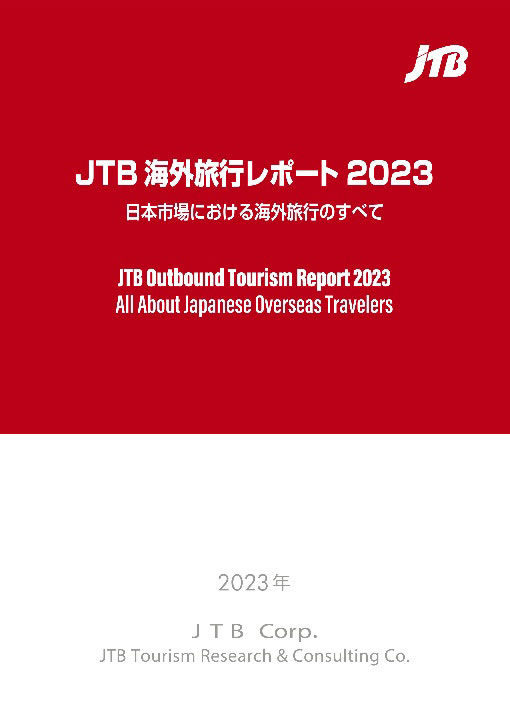
On September 29, 2023, JTB Corp. (headquartered in Shinagawa-ku, Tokyo; President & CEO Eijiro Yamakita) released the JTB Outbound Tourism Report 2023: All About Japanese Overseas Travelers, containing analyses of the state of the Japanese overseas travel market in 2022, and the outlook for the market in the demand recovery phase. First published in 1988, and now in its 36th edition, this report has been delineating the trends and structural changes in the Japanese overseas travel market based on JTB’s original surveys, and on statistics from relevant organizations. The analyses, editing, and publishing of the report was performed by the tourism think tank: JTB Tourism Research & Consulting Co. (headquartered in Shinagawa-ku, Tokyo; President and CEO Yoshihito Kazama).
In 2022, Japan saw signs of mild recovery in its overseas travel market, following the ease of COVID- induced border controls in destination countries/regions. The reopening of borders led to the resumption of our two surveys “The Factual Survey of the Overseas Travel Situation” and “The Opinion Survey of Overseas Travel Preferences,” which had been suspended due to the COVID-19 pandemic. These surveys show the trends of the Japanese overseas travel market in the demand recovery phase, and serve as the basis for the JTB Outbound Tourism Report 2023: All About Japanese Overseas Travelers.
The Main Points of the JTB Outbound Tourism Report 2023: All About Japanese Overseas Travelers:
1. The number of Japanese travelers who went overseas in 2022 amounted to a modest 2.77 million, indicating a slowness in demand recovery
In 2022, 2.77 million Japanese took trips overseas, a significant increase from 2021 when the strictest border controls were in place due to the COVID-19 pandemic. However, as an indication that a full-scale recovery in travel demand was yet to come, the number of travelers was only 13.8% of the pre-pandemic level of 2019, the year that saw a record of more than 20 million people going overseas. To understand the state of recovery in Japan and in other countries/regions, a comparison of changes in the number of outbound travelers was made, starting from the first month that each country/region achieved a 10% or greater increase in the number of outbound travelers from the same month in 2019 (see the graph “State of Recovery in the Number of Outbound Travelers in Japan and Other Countries/Regions” below). The result showed that, relatively-speaking, Japan’s outbound recovery is slower than other countries/regions.
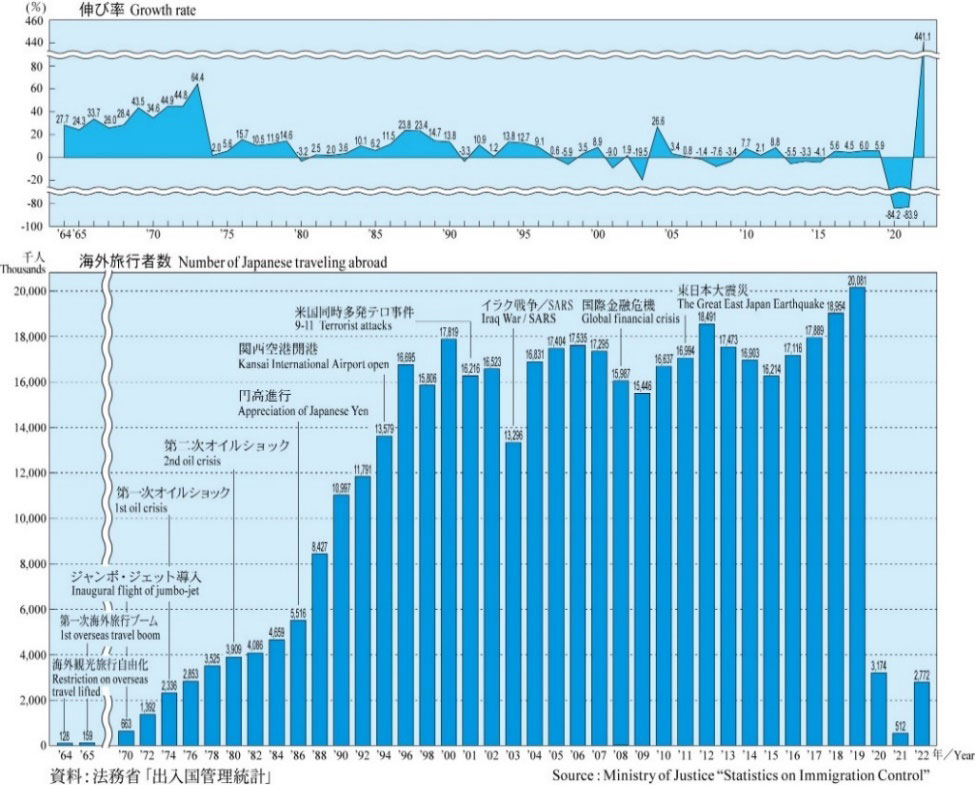
The Number of Japanese Traveling Overseas and the Growth Rate
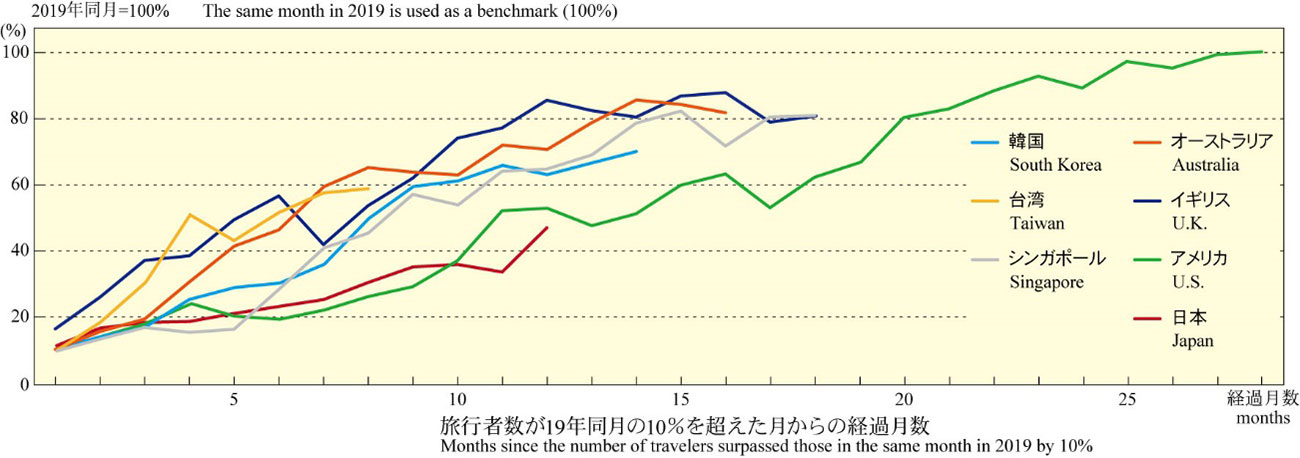
State of Recovery in the Number of Outbound Travelers in Japan and Other Countries/Regions
2. Soaring travel costs affected travelers’ decision making
The results of JTB’s original survey showed that the average travel costs for those who went overseas in 2022 were significantly higher than those of 2019 and earlier years, suggesting that the devaluation of the yen and price hikes in the overseas destinations had a major impact on the way people traveled. About 40% of these travelers changed their initial plans because of the rising costs, indicating that this factor directly affected their decision making. Looking at what factors were specifically altered, the survey suggests that by changing the itinerary, lowering the grades of accommodations, and taking other measures, the travelers made it possible to travel to their preferred destinations, rather than choosing not to go or changing their destinations. How the travelers’ sentiments would change because of the challenging situation arising from travel cost hikes remains a subject that requires close attention.

Action Taken in Deciding on a Trip and Specific Changes Made
3. The key to recovery: Improvement in the mindsets of veteran travelers
In the aftermath of major crises, such as the 9/11 terrorist attacks and the SARS outbreak, it was observed that the first sign of recovery in an adversely-hit travel market came from the resumption of travel by veteran travelers. The same trend might take place in this post-pandemic phase. The breakdown of travelers based on the number of overseas trips they took in 2021, the first half of 2022, and the second half of 2022, showed that as soon as travel demand began to improve in 2022 as a result of eased border restrictions, the proportion of veteran travelers began to gradually increase.
Looking at the survey respondents’ future intent to travel overseas according to their travel experience, in comparison to the results for 2019, the proportion of those who responded with “no plans have been made but I’d like to travel” has increased, possibly leading to a further recovery in travel demand.
Since the combined proportions of respondents who said, “I’m definitely not going” or “I’d like to (travel) if there is a chance” has not increased compared to 2019, it was evident that the travel intent of consumers has not diminished significantly. In driving the recovery of overseas travel demand further, understanding the changes that took place in the values of the travelers in the aftermath of the pandemic, and identifying elements that can serve as triggers for taking overseas trips, will be crucial.
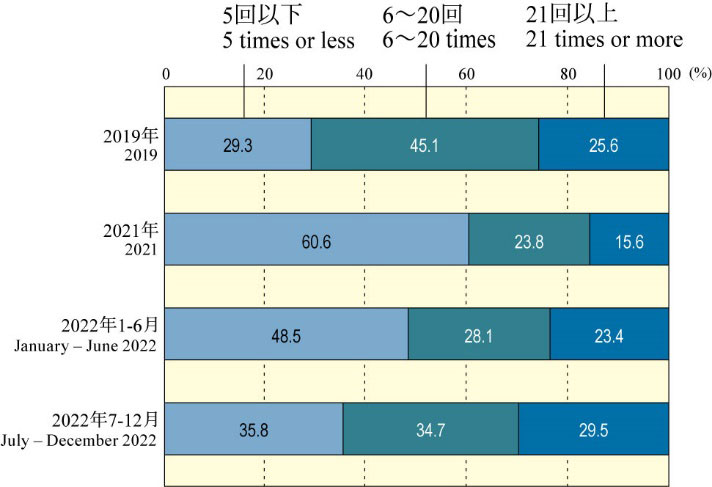
Changes in the Proportional Breakdown of Travelers by Number of Overseas Trips
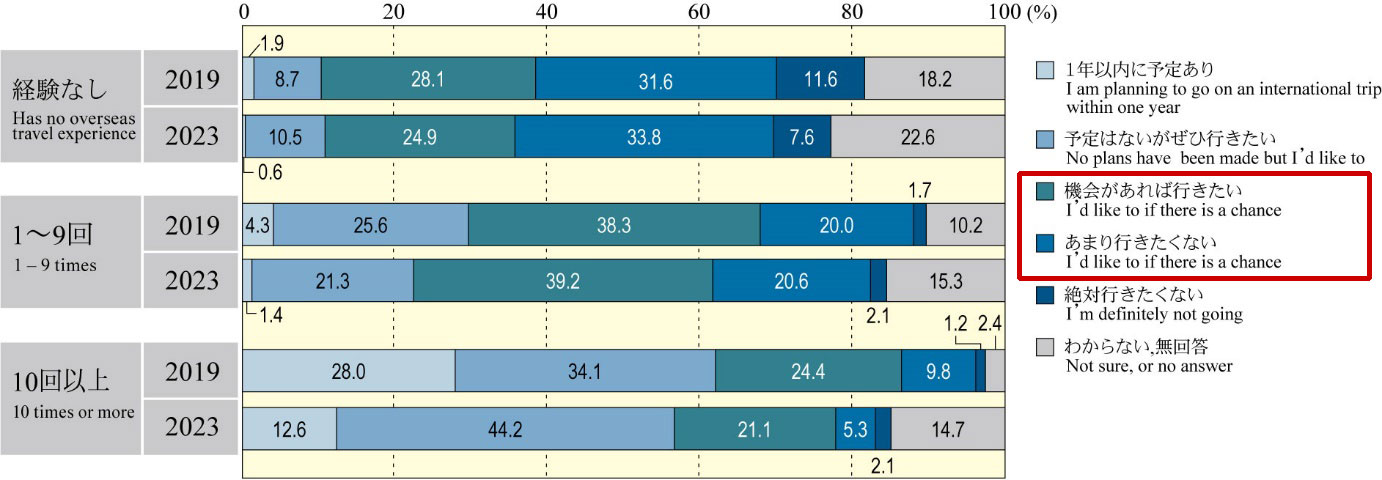
Intention to Travel Overseas by Travel Experience
This report can be purchased by accessing these links:
https://www.tourism.jp/en/tourism-database/publications/JTB-outbound-report-2023/
